Family: Tenthredinidae
Family common name: common sawflies
Subfamily: Blennocampinae
Tribe: Waldheimiini
Genus: Halidamia Benson, 1939
Subgenera: none
The Tenthredinidae are the most species-rich family and are found throughout the world, in all continents but Antarctica. They are known as the “common sawflies.” They can generally be recognized by a cylindrical body and long, segmented antennaeantenna:
the sensory organ emerging from the front of the head, usually between the compound eyes and above the clypeus; includes the flagellum, scape and pedicel
 . Otherwise, they come in a variety of colors, sizes, and forms (Goulet 1992Goulet 1992:
. Otherwise, they come in a variety of colors, sizes, and forms (Goulet 1992Goulet 1992:
Goulet H. 1992. The genera and subgenera of the sawflies of Canada and Alaska: Hymenoptera. Symphyta. The insects and arachnids of Canada. Part 20. Agriculture Canada Publication.).
Sawflies in the subfamily Blennocampinae have a diverse set of life histories and habits. Many species are restricted to subtropical and tropical regions, but the genus is still fairly species-rich in North America. Blennocampinae includes many sawflies that feed on ornamental and forestry crops. This subfamily can be recognized by wing venationvenation:
the network of veins on a wing
and bidentatebidentate:
having two teeth; often used in descrbing mandibles or tarsal claws
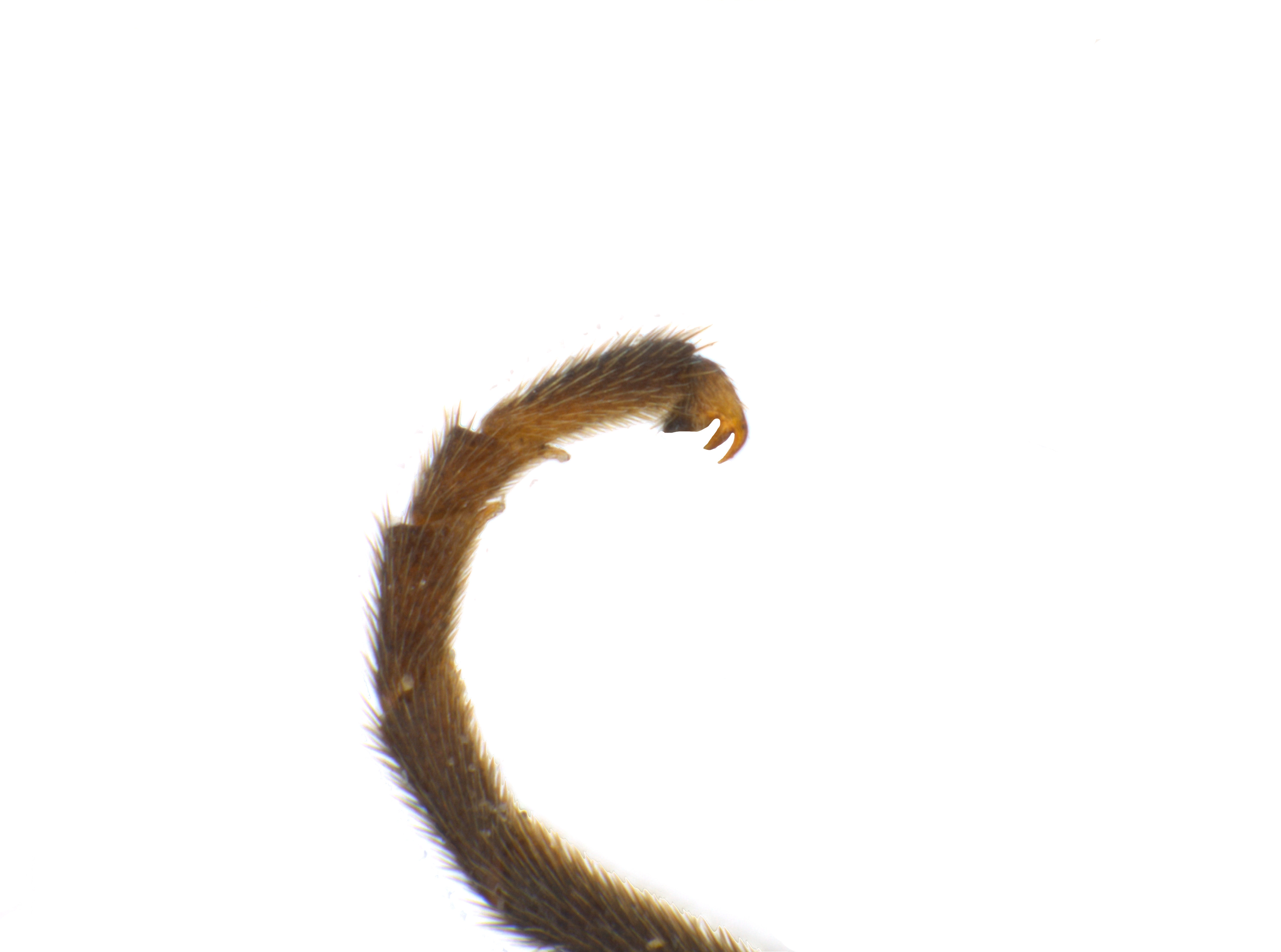 mandibles (Smith 1969dSmith 1969d:
mandibles (Smith 1969dSmith 1969d:
Smith DR. 1969d. Nearctic Sawflies. I. Blennocampinae: Adults and larvae (Hymenoptera: Tenthredinidae). Technical Bulletin, U.S. Department of Agriculture 1397: 1-176.).
Halidamia is monotypicmonotypic:
describes having only one representative; ex. a genus that includes only one species
. Halidamia affinis is about 5–6.5 mm in length, with a black-colored head and thoraxthorax:
the second and middle segment of the body, between the head and abdomen
 , orange legs and abdomenabdomen:
, orange legs and abdomenabdomen:
the third and last segment of an insect's body; in sawflies this is usually made up of 11 segments (segments 9 and 10 often fused)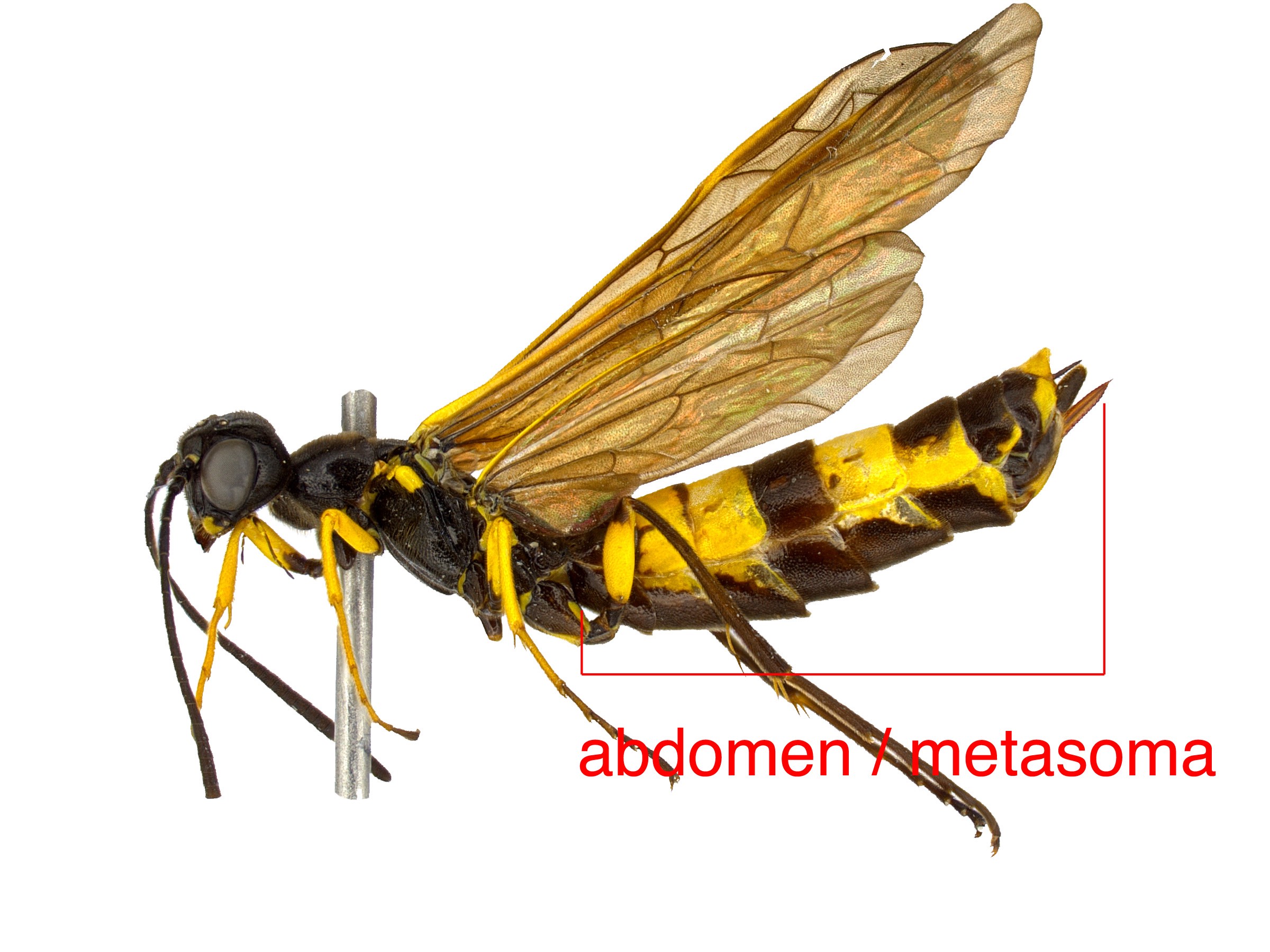 , and slightly darkened wings. The male is not known in North America (Smith 1969dSmith 1969d:
, and slightly darkened wings. The male is not known in North America (Smith 1969dSmith 1969d:
Smith DR. 1969d. Nearctic Sawflies. I. Blennocampinae: Adults and larvae (Hymenoptera: Tenthredinidae). Technical Bulletin, U.S. Department of Agriculture 1397: 1-176.).
There is a single described extantextant:
in existence; opposite of extinct
species worldwide, and it occurs in North America (Taeger et al. 2018Taeger et al. 2018:
Taeger A, Liston AD, Prous M, Groll EK, Gehroldt T, and Blank SM. 2018. ECatSymmdash;Electronic World Catalog of Symphyta (Insecta, Hymenoptera). Program version 5.0 (19 Dec 2018), data version 40 (23 Sep 2018). Senckenberg Deutsches Entomologisches Institut (SDEI), Muuml;ncheberg. https://sdei.de/ecatsym/ Accessed: 28 Jan 2020.).
Subfamily characters
 veins Cu1 and 1m-cu between 120°–150° (Goulet 1992Goulet 1992:
veins Cu1 and 1m-cu between 120°–150° (Goulet 1992Goulet 1992: veins M and 1m-cu parallel (Smith 1969dSmith 1969d:
veins M and 1m-cu parallel (Smith 1969dSmith 1969d: veins 2A and 3A incomplete (Smith 1969dSmith 1969d:
veins 2A and 3A incomplete (Smith 1969dSmith 1969d:Genus characters
 longer than wide (Smith 1969dSmith 1969d:
longer than wide (Smith 1969dSmith 1969d: light-colored and thin; dry specimens often with collapsed antennaeantenna:
light-colored and thin; dry specimens often with collapsed antennaeantenna: (Goulet 1992Goulet 1992:
(Goulet 1992Goulet 1992: veins 2A and 3A curved upward at the apexapex:
veins 2A and 3A curved upward at the apexapex: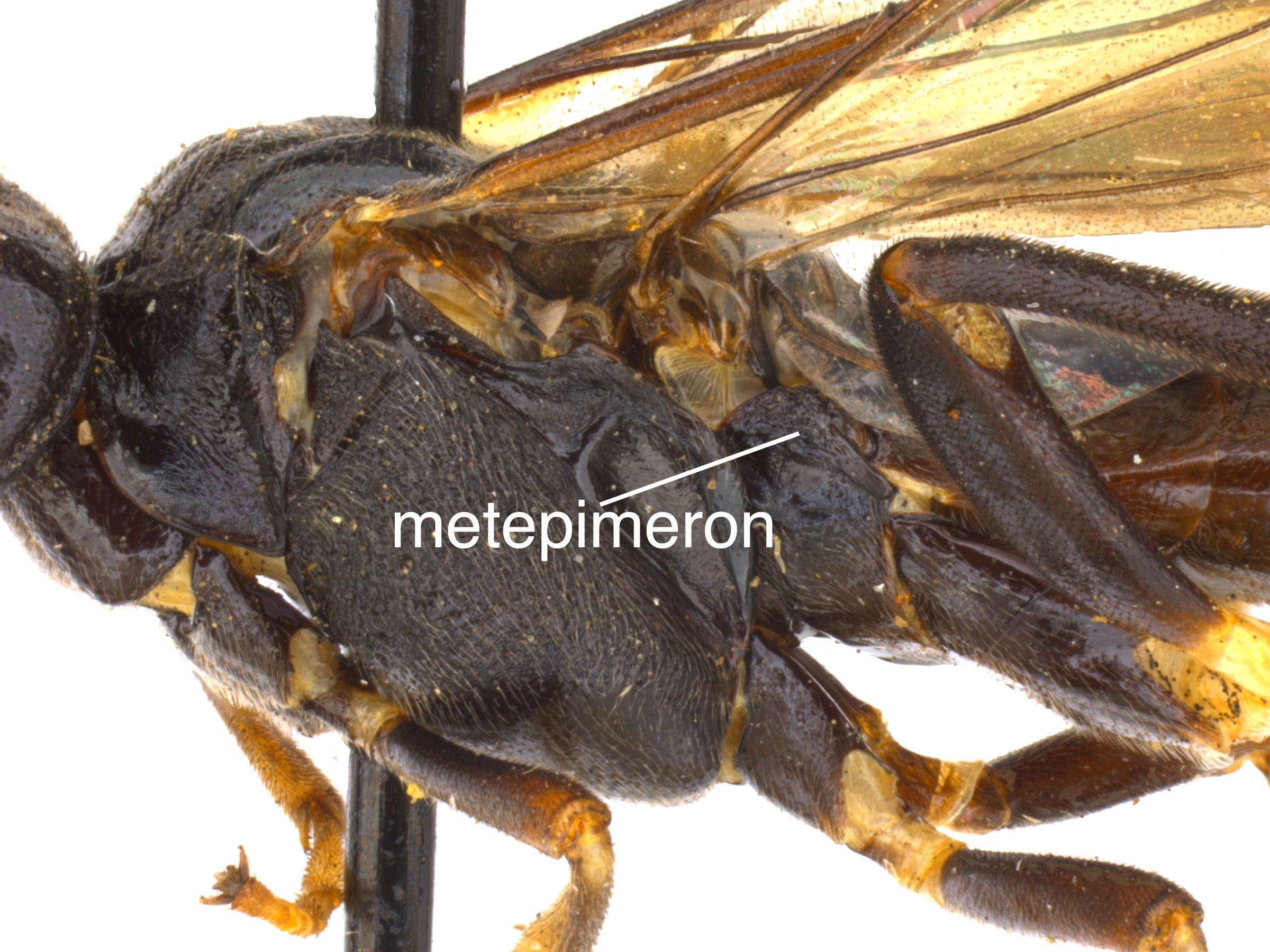 near the hind coxaecoxa:
near the hind coxaecoxa: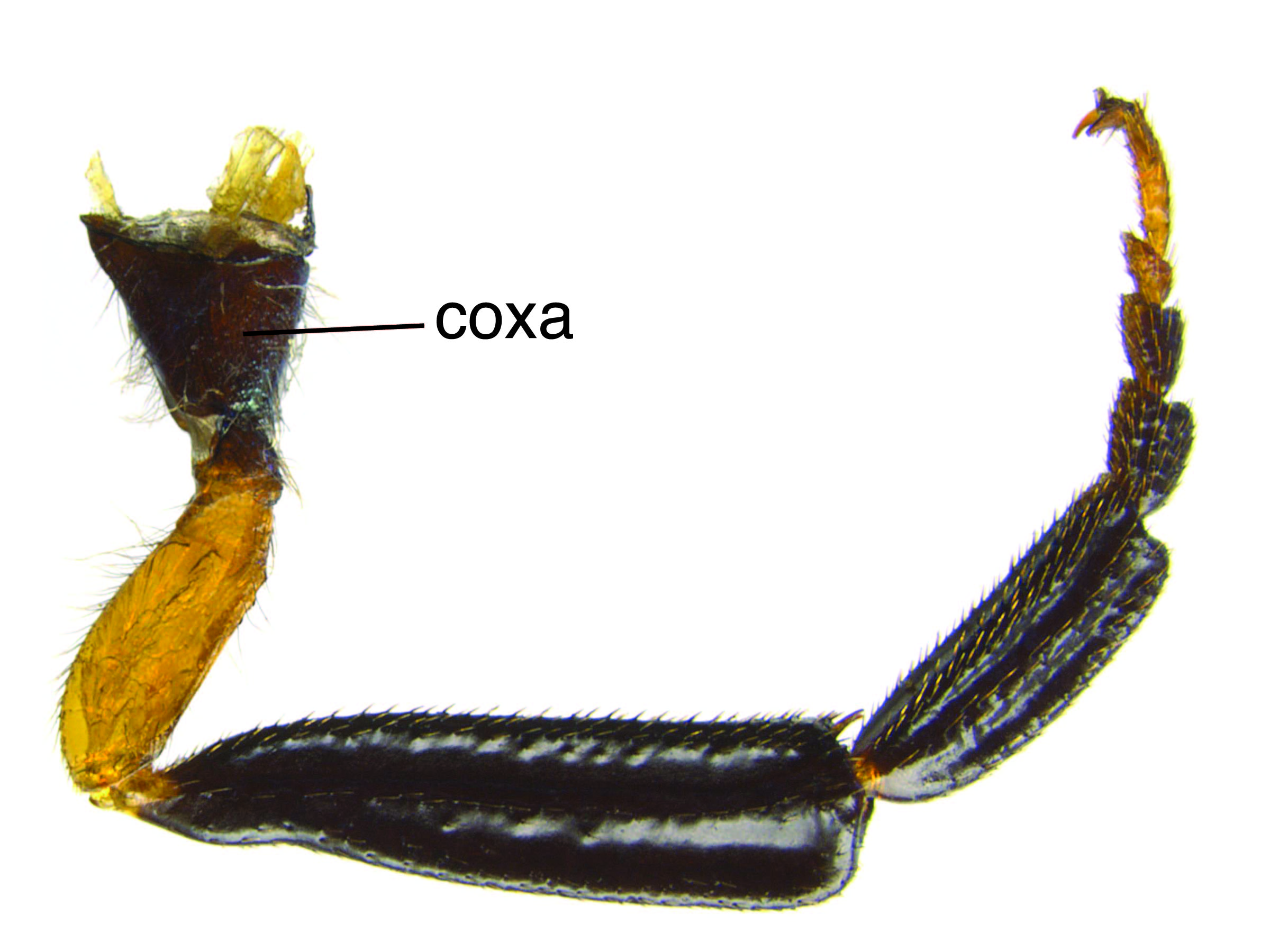 (Goulet 1992Goulet 1992:
(Goulet 1992Goulet 1992: basalbasal:
basalbasal: inner tooth long (Goulet 1992Goulet 1992:
inner tooth long (Goulet 1992Goulet 1992:Halidamia can be distinguished from other genera in the subfamily Blennocampinae by the lack of pulvillipulvillus:
soft pads used for surface adhesion, located in sawflies on the first 4 segments of the tarsus
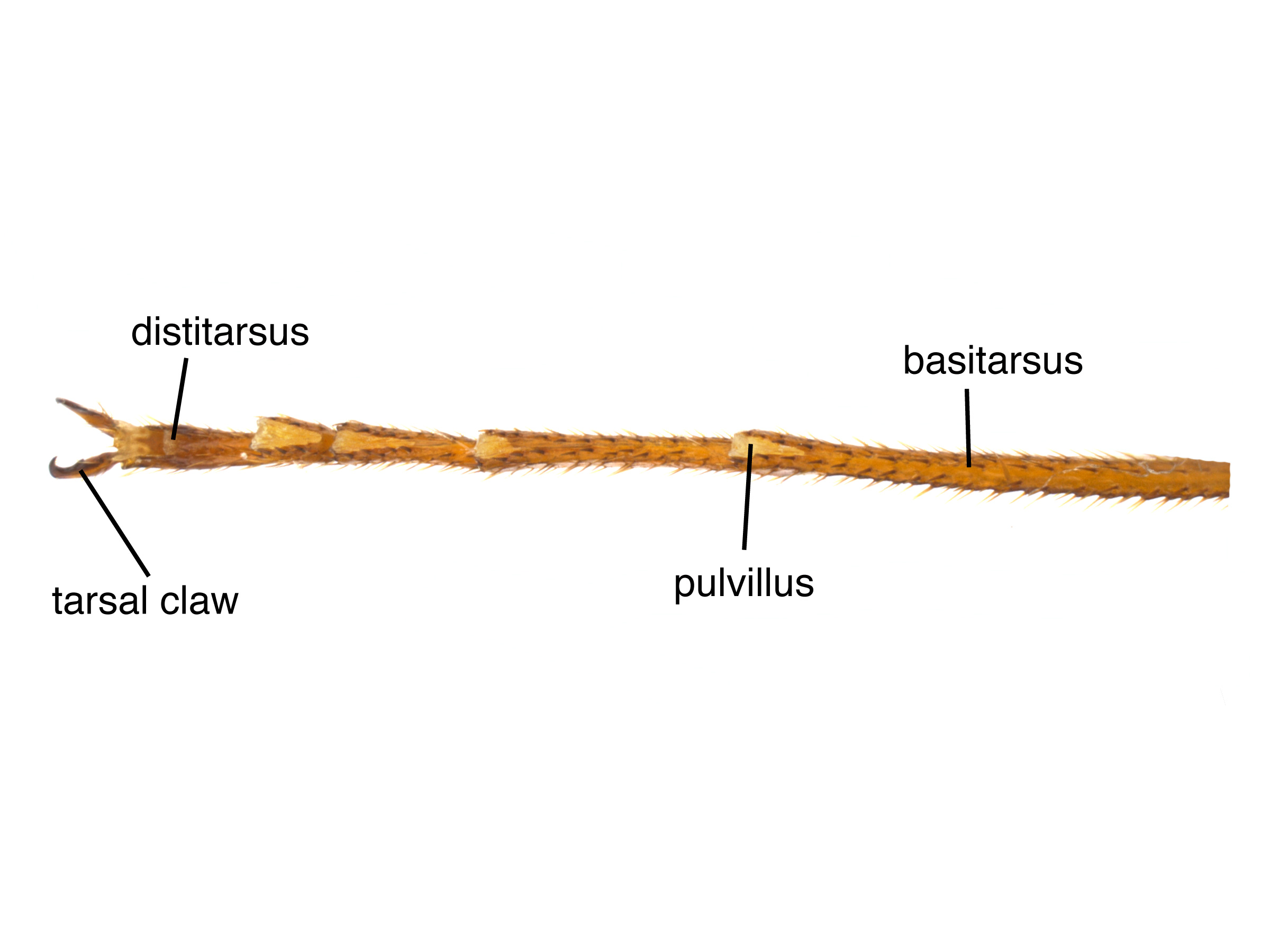 on the basalbasal:
on the basalbasal:
towards the base; closest to the body
tarsomeres and short apicalapical:
towards the apex; farthest away from the body
antennal segments, and from closely related Waldheimia by the curved apexapex:
the end or most distal area of any structure
of the fore wingfore wing:
the anterior wing of each pair of wings; usually the largest wing of the pair
 veins 2A and 3A (Smith 1969dSmith 1969d:
veins 2A and 3A (Smith 1969dSmith 1969d:
Smith DR. 1969d. Nearctic Sawflies. I. Blennocampinae: Adults and larvae (Hymenoptera: Tenthredinidae). Technical Bulletin, U.S. Department of Agriculture 1397: 1-176.).
none
In North America, the host for H. affinis is not known. In Europe, H. affinis feeds on species of Galium (cleavers), including Galium aparine (stickywilly) and Galium mollugo (false baby’s breath) (Smith 1969dSmith 1969d:
Smith DR. 1969d. Nearctic Sawflies. I. Blennocampinae: Adults and larvae (Hymenoptera: Tenthredinidae). Technical Bulletin, U.S. Department of Agriculture 1397: 1-176.).
unknown
World: This species is known from North America and throughout Europe (Smith 1969dSmith 1969d:
Smith DR. 1969d. Nearctic Sawflies. I. Blennocampinae: Adults and larvae (Hymenoptera: Tenthredinidae). Technical Bulletin, U.S. Department of Agriculture 1397: 1-176.).
North America: Halidamia affinis is an introduced species that was first discovered in North America in New York in 1931 (Greenbaum 1977Greenbaum 1977:
Greenbaum HN. 1977. Dispersal of the introduced Palaearctic sawfly, Halidamia affinis (Fallen), in North America (Hymenoptera: Tenthredinidae). Proceedings of the Entomological Society of Washington 79 (4): 559-560.). It now occurs in the northeastern United States, as far west as Wisconsin and Kansas, and on the Pacific coast in Washington and California (Smith 1969dSmith 1969d:
Smith DR. 1969d. Nearctic Sawflies. I. Blennocampinae: Adults and larvae (Hymenoptera: Tenthredinidae). Technical Bulletin, U.S. Department of Agriculture 1397: 1-176., Greenbaum 1977Greenbaum 1977:
Greenbaum HN. 1977. Dispersal of the introduced Palaearctic sawfly, Halidamia affinis (Fallen), in North America (Hymenoptera: Tenthredinidae). Proceedings of the Entomological Society of Washington 79 (4): 559-560., Looney et al. 2016Looney et al. 2016:
Looney C, Smith DR, Collman SJ, Langor DW, and Peterson MA. 2016. Sawflies (Hymenoptera, Symphyta) newly recorded from Washington State. Journal of Hymenoptera Research 49: 129-159. https://doi.org/10.3897/JHR.49.7104).
Map data from: GBIF.org (29 October 2019) GBIF Occurrence Download Halidamia
Details about data used for maps can be found here.